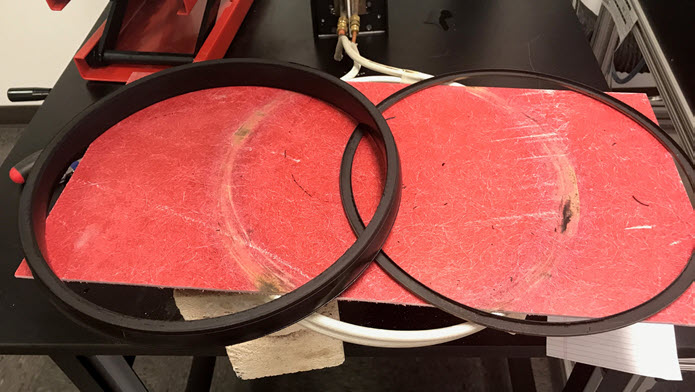9 Reasons to Consider Induction Heating for Manufacturing
In today’s manufacturing landscape, efficiency, precision, and sustainability are critical. Induction heating—a process that uses electromagnetic...
Processes
Processes: More
Processes: More

Industries:
Industries: More
Industries: More
Industries: More

Products:
Products: More
Services:
Services: More

Learn:
Learn: More
About:


A manufacturer in the oil and gas industry was looking to heat rubber gaskets with metal end rings to 550 °F (288 ºC) for a release/debonding application. The end product is a subsea sealing solution. Initial testing confirmed that an EASYHEATTM 8.3 kW, 150-400 kHz induction heating system equipped with a remote workhead was optimal for the application.
For testing, temperature indicating paint was applied to the part, which melts when the part reaches the targeted temperature. It took 30-40 seconds to heat one end of the sample to temperature. The part was rotated during heating by hand to normalize the heat produced and remove the effect of any localized hot spots. Feasibility of the application with an Ambrell induction heating solution was confirmed by THE LAB.
The speed and precision of induction heating from Ambrell, along with the expertise of the application experts at THE LAB, were key reasons why the client turned to Ambrell. Click hereto learn about other bonding application processes that THE LAB at Ambrell has designed. Interested in getting your application tested by THE LAB? Just fill out this form to get started!

In today’s manufacturing landscape, efficiency, precision, and sustainability are critical. Induction heating—a process that uses electromagnetic...

When it comes to many manufacturing processes, including this forging application, precision and efficiency are critical. Traditional heating methods...

The busy fall tradeshow schedule continues, with Ambrell set to exhibit at two more events next week: WESTEC 2025 in Anaheim, CA and The Battery Show...